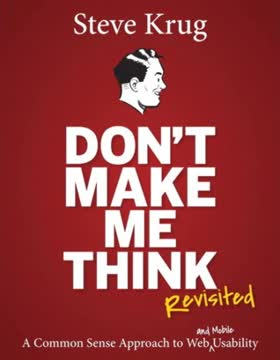Key Takeaways
1. Why Brand Identity Matters
Because people often choose products based on their perceived value rather than their actual value.
Perception drives choice. Brand identity is crucial because it shapes how people perceive a company or product, often influencing decisions more than objective qualities. A strong identity can elevate perceived value, allowing businesses to command higher prices and build lasting customer relationships across generations and borders. It's about telling a compelling story that resonates emotionally with the audience.
More than a logo. While a logo is a central element, brand identity encompasses the entire visual system and the feelings it evokes. Think of iconic brands like McDonald's, Apple, or Target; their identities are instantly recognizable and deeply ingrained in public consciousness. This recognition isn't accidental but the result of consistent visual communication that builds trust and familiarity over time.
Standing out is key. In a world saturated with information and increasingly similar visual messages, a distinctive brand identity is essential for differentiation. Skilled designers find the unique story of a business and translate it into a visual language that cuts through the noise. This allows companies to stand above the crowd and become memorable faces in the marketplace.
2. The Hallmarks of Iconic Design
The simplest solution is often the most effective.
Simplicity is power. Iconic designs are fundamentally simple, which enhances their versatility, recognition, and memorability. A minimalist approach ensures a logo works across various applications, from tiny favicons to large billboards, without losing impact. Simple forms are easier for the human mind to process and recall after just a brief glance.
Beyond aesthetics. A successful design must be relevant and appropriate for the business and its target audience. While creativity is vital, the design should align with the industry, client values, and customer expectations. However, relevance doesn't always mean literal depiction; a logo doesn't have to show what a company does, but it must feel right for its context.
Enduring distinction matters. Great logos avoid fleeting trends, aiming for longevity and timelessness. They possess a unique quality or style that sets them apart from competitors. Working in black and white initially helps focus on form and distinction, ensuring the mark is recognizable by its shape or outline alone, before color is even considered.
3. Mastering the Design Brief
Without knowing the nitty-gritty details of your client’s business, his reasons for seeking a brand identity, and expectations of the process and the fi nal design, you cannot possibly be successful.
Foundation of success. Laying thorough groundwork is non-negotiable; you must deeply understand your client's world before designing. This involves asking specific, probing questions to uncover their motivations, challenges, competitors, and target audience's values. This information forms the design brief, a critical document guiding the entire project.
Asking the right questions. The brief should capture essential details and strategic insights. Key questions include:
- What does your audience care about?
- How do people learn about your product/service?
- Why is a new identity needed?
- What words should people associate with your company?
- What logos appeal to your customers, and why?
Research complements questions. Supplement client discussions with your own field research. Investigate the company's history, past identities, and market perception. Critically analyze competitors' branding to identify weaknesses you can leverage. Documenting all this information creates a robust brief that keeps the project focused and provides concrete reasons for design decisions.
4. Navigating the Redesign Challenge
It’s up to you to talk with your clients about the specifi c reasons for their projects, and advise them about which course of action makes the most sense.
High stakes involved. Redesigning an established brand carries significant risk compared to creating a new identity from scratch, as it involves potentially impacting existing brand equity. Clients often seek redesigns for various reasons, but doing so merely to follow trends or boost short-term sales without a strategic basis can lead to costly failures, like the Tropicana packaging debacle.
Strategic rationale needed. A redesign should be driven by sound business reasons, such as:
- The current identity is dated or inconsistent.
- The company's services have expanded beyond the current identity's scope.
- Market perception is negative or inaccurate.
- Responding to significant changes in the competitive landscape.
As the expert, you must guide the client to ensure the reasons are strategic and not just reactive or superficial.
Consider refinement vs. overhaul. Sometimes, a full redesign isn't necessary or advisable. A refinement or refresh of the existing identity might be sufficient to modernize the look while retaining valuable recognition built over time. Using focus groups to understand customer perception of the current brand is a crucial step before committing to a drastic change, helping to mitigate risks.
5. Pricing for Value, Not Hours
Hourly rates never benefi t anyone.
Price the project, not time. Avoid charging by the hour, as it undervalues your accumulated expertise and experience, which allows you to work efficiently. Clients also prefer knowing the total cost upfront rather than facing potentially escalating hourly bills. A set fee based on the project's scope and value is the preferred approach for both parties.
Factors influencing price. Your pricing should reflect several key factors:
- Your level of expertise and reputation.
- The complexity and scope of the project.
- The expected turnaround time (rush jobs cost more).
- Additional services provided (e.g., print management).
- The client's size and the potential impact of the design.
- Current market demand for your services.
Secure a down payment. Always request a deposit (e.g., 50%) before starting work, especially with new clients. This ensures you are compensated for your initial time and effort and provides the client with motivation to see the project through. It also helps cover any upfront costs you might incur, such as printing if you manage that service.
6. From Sketchpad to Screen
By removing the computer from the creative process, you gain much more freedom when translating your thoughts.
Ideas start analog. The creative process begins away from the computer, using mind-mapping and sketching. Mind maps help explore word associations and potential design directions related to the brief. Sketching, regardless of artistic skill, is crucial for quickly translating thoughts into visual ideas, allowing for rapid exploration and iteration without the constraints of software.
Sketching fuels concepts. The sketchpad is a conceptual playground where ideas can collide and evolve freely. Aim to generate numerous sketches, exploring different angles and combinations of elements identified in your mind maps. This volume of exploration increases the chances of discovering unique and effective concepts before committing to digital execution.
Digital refinement and presentation. Once strong concepts emerge from sketching, move to vector software like Adobe Illustrator for digital rendering. Present only your best ideas to the client, ideally in black and white initially to focus feedback on form and concept, not color preference. Use mockups (created in Photoshop) to show designs in context (e.g., on business cards, signage) to help clients visualize the final application.
7. The Art of Client Conversation
Presentations are really nothing more than a conversation with your client.
Manage the presentation. Frame client presentations as a continuation of the ongoing dialogue, not a high-pressure reveal. Ideally, present directly to the decision-makers (the "committee") to avoid misinterpretation through intermediaries. Briefly recap the project background and goals to ensure everyone is aligned before showing designs.
Set clear ground rules. To avoid "design by committee," establish rules upfront: clients provide strategic input ("this feels too weak") but grant you executional freedom ("don't tell me to make the blue darker"). Position yourself as the expert guiding the process. Don't be afraid to gently steer the conversation back to strategy if feedback becomes overly focused on subjective design details.
Involve the committee strategically. Keep decision-makers involved at key strategic points throughout the process, not just at the final presentation. This builds trust and ensures their feedback is incorporated effectively. Be prepared to listen to client suggestions, even if you initially disagree; sometimes, exploring their ideas (and showing the result) can help them understand why your proposed solution is stronger.
8. Keeping the Creative Fire Alive
Never stop learning.
Continuous growth is key. Motivation in design comes from a relentless desire to improve and a deep curiosity about the world. Stay inspired by studying the work of iconic designers, exploring different disciplines, and constantly seeking new knowledge and experiences. This fuels your creative ammunition and keeps your skills evolving with the profession.
Balance and perspective. Avoid burnout by maintaining a healthy work-life balance. Step away from the computer, engage in activities outside of design, and create personal projects solely for your own satisfaction. Remember the bigger picture: your work supports your life and goals, which can be a powerful motivator during challenging projects.
Embrace challenges and setbacks. Recognize that getting stuck is a normal part of the creative process for everyone. Don't fear mistakes; learn from them to refine your approach to pricing, client communication, and design. Find common ground with clients during feedback sessions, exploring alternatives even if you prefer your original idea.
9. Essential Practical Design Tips
Remember, it’s a two-way process.
Start with questions. Always begin by asking extensive questions to fully understand the client, their market, and their goals. This prevents costly missteps later in the project.
Practical considerations:
- Understand potential print costs early, as color choices impact budget.
- Expect the unexpected and build buffer time into your deadlines.
- Design in black and white first to focus on form and concept.
- Use vector software (Illustrator) for scalability, not Photoshop.
Design for impact and versatility. A logo doesn't need to literally depict what a company does, but it must be relevant and legible at various sizes. Aim for distinction by focusing on one memorable feature. Ensure the design works well in a single color and in reverse (white on dark). Consider the substrate (paper/material) it will appear on.
Professionalism and collaboration. Not every business needs a symbol; a strong logotype might suffice. Be consistent in applying the brand identity, potentially creating style guides. Match typography to the mark's style. Remember that a logo is just one part of the overall brand. Treat the client relationship as a collaborative process, listening to feedback while guiding them towards the strongest solution.
Last updated:
Review Summary
Logo Design Love is highly praised by readers as an essential guide for graphic designers and business owners. Reviewers appreciate its comprehensive coverage of logo design principles, creative processes, and client relations. The book is commended for its clear explanations, practical advice, and inspiring examples. Many find it valuable for both beginners and experienced designers. Readers particularly enjoy the author's personal experiences and insights. The book is described as engaging, informative, and a must-read for anyone interested in branding and visual identity design.
Similar Books










Download PDF
Download EPUB
.epub digital book format is ideal for reading ebooks on phones, tablets, and e-readers.




